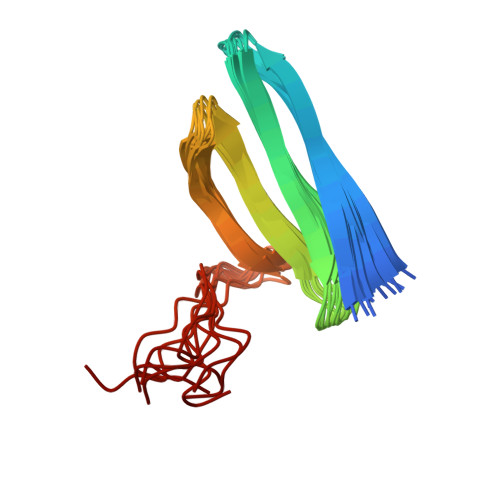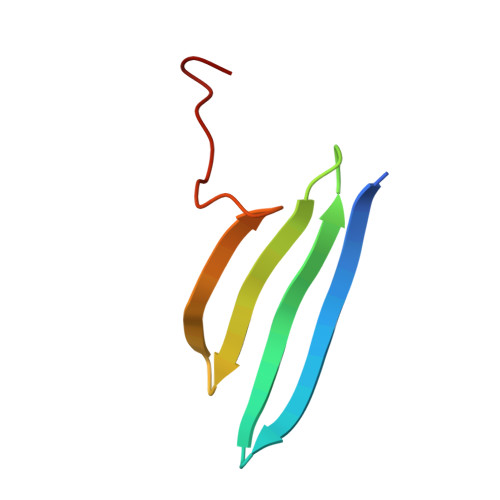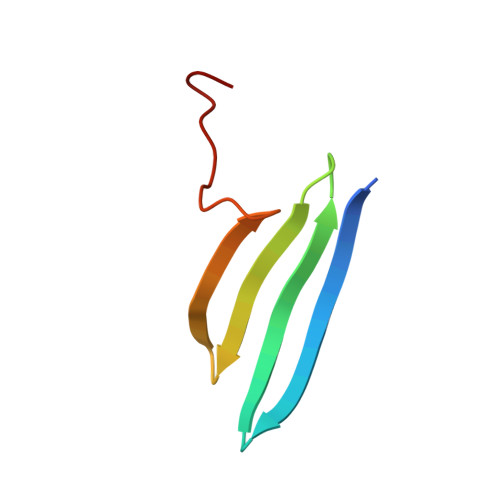An S/T motif controls reversible oligomerization of the Hsp40 chaperone DNAJB6b through subtle reorganization of a beta sheet backbone.
Karamanos, T.K., Tugarinov, V., Clore, G.M.(2020) Proc Natl Acad Sci U S A 117: 30441-30450
- PubMed: 33199640
- DOI: https://doi.org/10.1073/pnas.2020306117
- Primary Citation of Related Structures:
7JSQ - PubMed Abstract:
Chaperone oligomerization is often a key aspect of their function. Irrespective of whether chaperone oligomers act as reservoirs for active monomers or exhibit a chaperoning function themselves, understanding the mechanism of oligomerization will further our understanding of how chaperones maintain the proteome. Here, we focus on the class-II Hsp40, human DNAJB6b, a highly efficient inhibitor of protein self-assembly in vivo and in vitro that forms functional oligomers. Using single-quantum methyl-based relaxation dispersion NMR methods we identify critical residues for DNAJB6b oligomerization in its C-terminal domain (CTD). Detailed solution NMR studies on the structure of the CTD showed that a serine/threonine-rich stretch causes a backbone twist in the N-terminal β strand, stabilizing the monomeric form. Quantitative analysis of an array of NMR relaxation-based experiments (including Carr-Purcell-Meiboom-Gill relaxation dispersion, off-resonance R 1ρ profiles, lifetime line broadening, and exchange-induced shifts) on the CTD of both wild type and a point mutant (T142A) within the S/T region of the first β strand delineates the kinetics of the interconversion between the major twisted-monomeric conformation and a more regular β strand configuration in an excited-state dimer, as well as exchange of both monomer and dimer species with high-molecular-weight oligomers. These data provide insights into the molecular origins of DNAJB6b oligomerization. Further, the results reported here have implications for the design of β sheet proteins with tunable self-assembling properties and pave the way to an atomic-level understanding of amyloid inhibition.
Organizational Affiliation:
Laboratory of Chemical Physics, National Institute of Diabetes and Digestive and Kidney Diseases, National Institutes of Health, Bethesda, MD 20892.


















